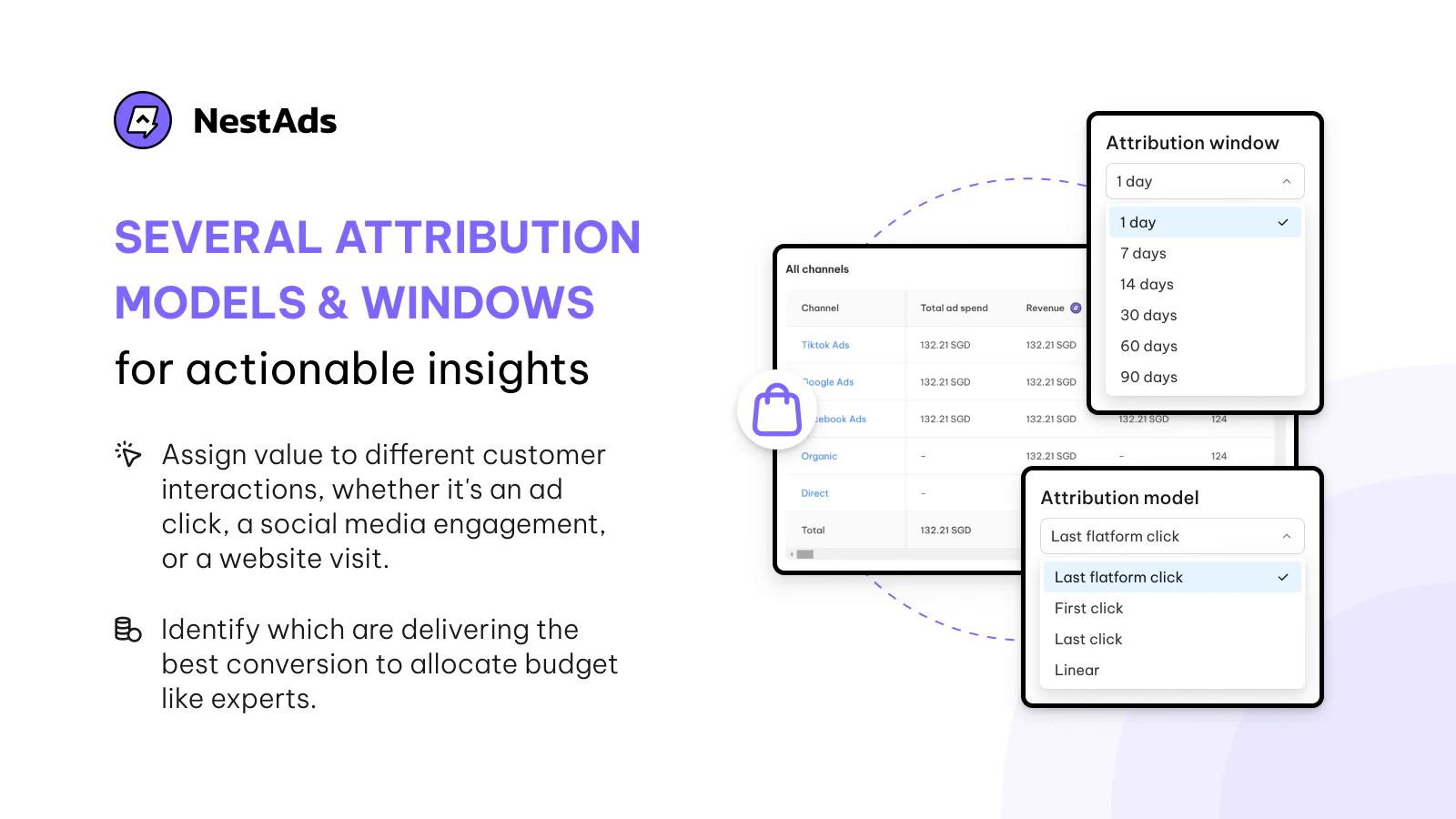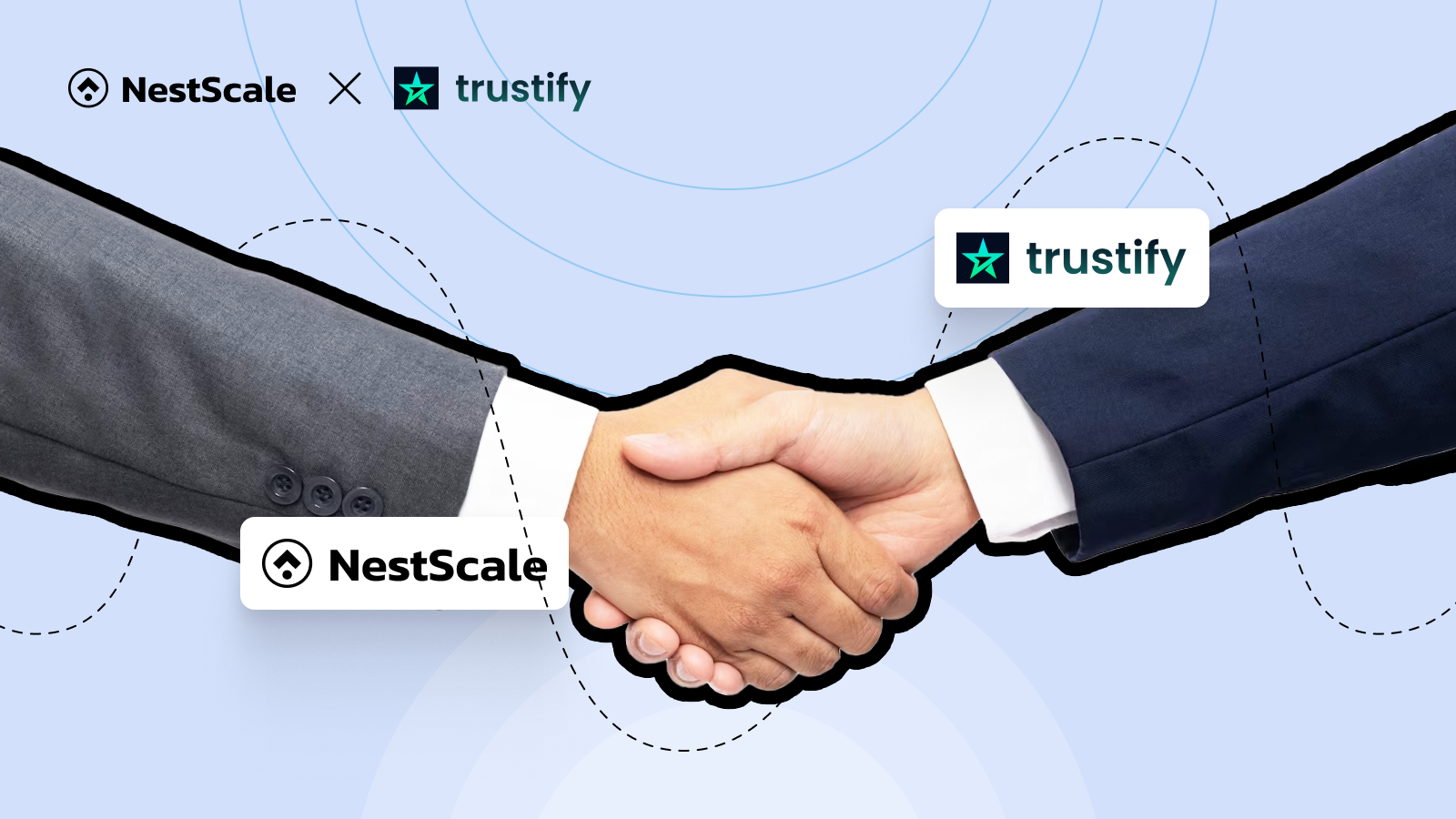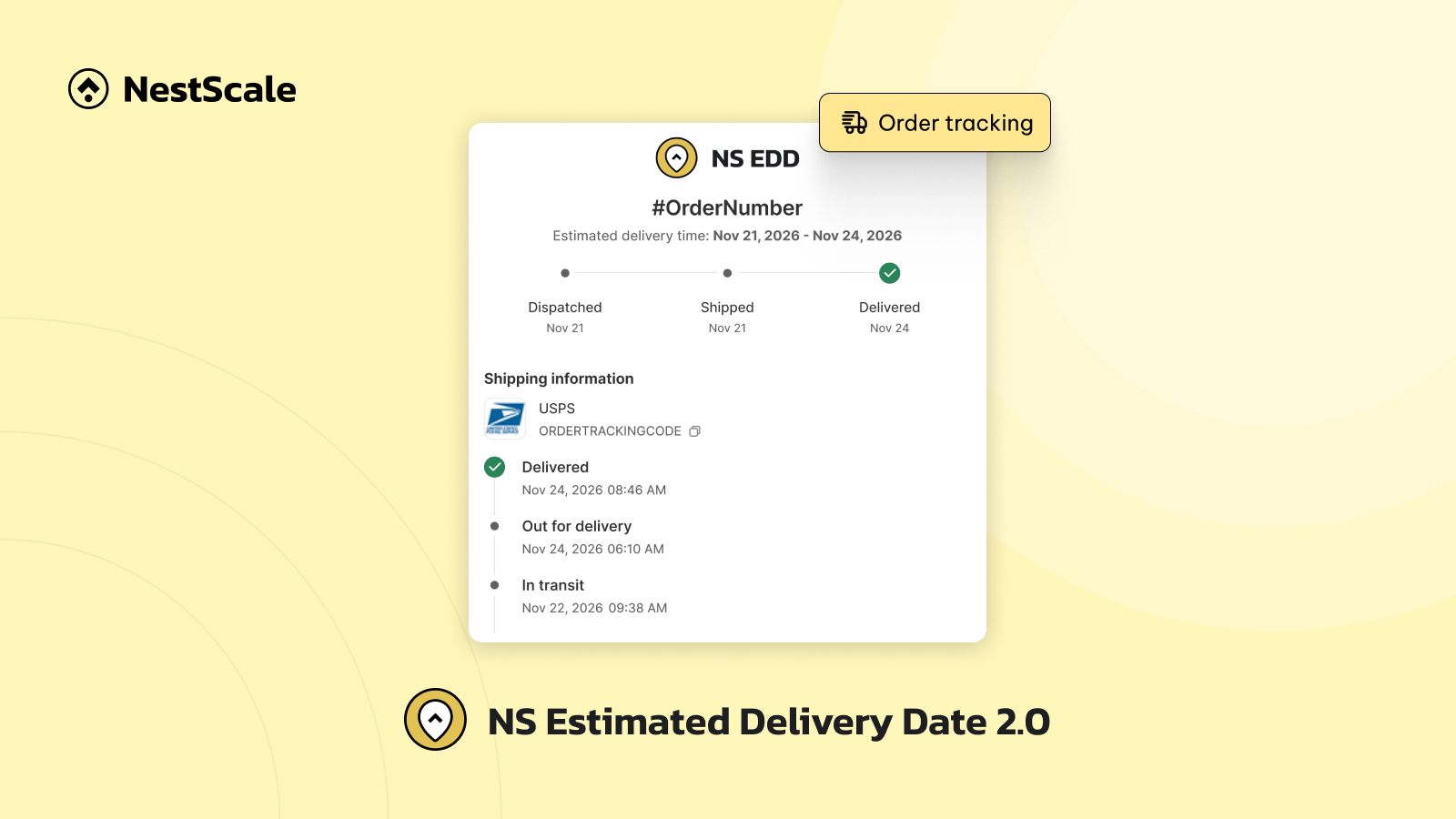In today’s dynamic digital marketing world, understanding how users interact with ads across various touchpoints is essential for optimizing campaigns and maximizing ROI. Two popular and effective models for attributing conversions are the Last-click vs Data-driven attribution model.
In this blog post, we’ll dive deep into these models, uncovering their definitions, unique advantages, potential drawbacks, and the ideal scenarios for their application. Whether you’re a seasoned marketer or just getting started, it will provide valuable insights to help you make informed decisions and supercharge your marketing strategies. Let’s begin!
An overview of Last-click & Data-driven attribution
Before diving into the key differences between the Last-Click and Data-Driven Attribution models, it’s important first to understand their concepts and how they assign credit to touchpoints. Let’s explore this through some real-life examples.
Last-click attribution model
Last-click attribution model assigns all credit for a conversion to the final interaction a user has before purchasing. This means that if a user clicks on an ad, visits the website, and then completes a purchase, the last click on the ad is credited for the entire conversion.

| Pros | Cons |
|---|---|
| Easy to implement and understand. | Only credit the last touchpoint, neglecting earlier interactions. |
| Widely accepted and used in the industry, making benchmarking easier. | Can misrepresent the effectiveness of upper-funnel marketing activities. |
| Provide real-time data, useful for quick analysis. | Bias channels that typically close conversions, potentially undervaluing other channels. |
| Do not require large amounts of data to function. | Offer a limited view of the customer journey, reducing strategic insights & less effective for campaign with multiple touchpoints |
| Offer a limited view of the customer journey, reducing strategic insights & less effective for campaigns with multiple touchpoints | Considered outdated compared to advanced models like Data-driven attribution. |
Example:
Imagine a user sees several ads for a new smartphone over a week. However, he only decides to buy it after clicking on an ad in a final search. In this model, only that last click on the search ad is credited for the sale, ignoring the earlier ads that also played a role in influencing the purchase decision.
Data-driven attribution model
Data-driven attribution model, often a solution provided by Google, uses machine learning to analyze conversion data. This model assigns credit to various touchpoints that lead to a conversion. By considering the entire customer journey, it provides a more comprehensive understanding of how marketing efforts contribute to conversions. While it requires a substantial amount of data to function effectively, it offers a more accurate picture of marketing performance.

| Pros | Cons |
|---|---|
| Consider the entire customer journey, providing a comprehensive analysis. | Require a substantial amount of data to function effectively. |
| Use machine learning to accurately assign credit to various touchpoints. | Lead to more complex setup and management compared to simpler models like Last-click attribution. |
| Continuously update and adapt to changes in user behavior and market conditions. | May incur higher costs due to advanced features and potentially needing expert management. |
| Provide more accurate insights, helping to optimize marketing spend and improve ROI. | Primarily rely on data from Google’s ecosystem, which may not include all marketing channels. |
| Deliver actionable insights that can inform better marketing strategies and decisions. | The machine learning algorithms are proprietary, making the decision process less transparent. |
| Help identify the true impact of various marketing channels, leading to better resource allocation. | Needs continuous monitoring and adjustment to ensure optimal performance. |
Example:
If a user first clicks on a display ad, later signs up for a newsletter through an email campaign, and finally makes a purchase after clicking on a search ad, the Data-driven model evaluates each touchpoint’s role in the conversion and assigns credit accordingly. This holistic approach helps marketers optimize their strategies by understanding the true value of each marketing effort.
Comparison of using Last-click vs Data-driven attribution
Next, we will examine the strengths and limitations of both the Last-click vs Data-driven attribution models and provide valuable insights into their respective roles in understanding marketing effectiveness through the comparison table below.
| Last-click attribution | Data-driven attribution | |
|---|---|---|
| Conversion credit allocation | Assigns all conversion credit to the last touchpoint before the conversion. | Display advertising |
| Upper funnel search | Only credits the last search ad clicked before the conversion. | Credits all search ads involved in the conversion path. |
| Display advertising | Credits the last channel that generated the click, either display or search. | Credits both display and search ads if the path includes clicks from both channels, adjusting credit based on interaction. |
| Natural search reporting | Only credits the last clicked channel, either natural or paid search. | Spreads credit across both organic & paid search channels if clicks from both are involved in the conversion path. |
| Shared floodlight configuration | Only credits the last Search Ads 360 advertiser’s ad clicked. | Credits multiple Search Ads 360 advertisers involved in the conversion path if using a shared Floodlight configuration. |
| Time range of report | Includes conversions for the current day, potentially showing higher conversion counts in reports that include today’s data. | Does not include conversions for the current day, leading to potentially lower conversion counts in reports that include today’s data. |
| Credit distribution visibility | Displays the credit assigned to the last click only, without detailed distribution across other channels. | Does not show specific credit distribution across display or natural search channels in Search Ads 360 reports. |
When should you use the Last-click attribution model?
Here are some essential traits of a business that we believe could benefit from using the Last Click Attribution model:
- Simplicity & quick insights needed: Businesses prioritize straightforwardness and want rapid insights into their marketing performance. It’s easy to understand and implement, making it ideal for quickly identifying the effectiveness of the last marketing touchpoint.
- Limited marketing channels: Ideal for businesses operating mainly through a few key channels (e.g., email marketing, social media). The Last Click model helps allocate budgets efficiently by clearly showing which channels drive conversions.
- Budget constraints: A cost-effective option for companies with tighter budgets. It has lower setup and maintenance costs compared to more complex models and doesn’t require advanced analytics tools or extensive data processing capabilities.
- Linear customer journeys: A business has customers who follow a straightforward path to conversion. If the customer journey involves minimal interaction across multiple channels, the Last Click model accurately reflects the final touchpoint’s contribution.
- Short-term goals: Businesses focusing on immediate sales or promotions. It offers a direct measure of the last marketing interaction’s effectiveness, allowing quick strategy adjustments based on immediate outcomes rather than long-term engagement or loyalty.
When should you use the Data-driven attribution model?
Businesses that should consider using the Data-Driven Attribution model typically share certain characteristics and needs:
- Complex customer journeys: Businesses with customers who engage in multi-touchpoint journeys. This model effectively analyzes intricate paths to conversion, ensuring each touchpoint’s contribution is recognized.
- Need for customization: Perfect for businesses aiming to offer personalized experiences. This model provides a deeper understanding of individual customer journeys, allowing for tailored marketing strategies that resonate with consumers.
- Strategic decision-making: Companies seeking to make informed decisions and gain a competitive edge. Data-driven attribution helps differentiate through data-informed strategies that address unique customer needs and behaviors.
- Access to adequate data & resources: Effective implementation requires substantial-quality data and resources to manage complex analytics. This includes having the infrastructure and personnel capable of handling sophisticated attribution models.
- Flexibility & scalability: Ideal for businesses expecting changes in marketing strategies or customer behaviors. The model adapts to evolving customer journeys, ensuring marketing efforts align with current trends.
So… which model best suits your business tracking?
When choosing the right attribution model for your advertising goals, consider the complexity of your customer journey and the depth of analysis needed. For straightforward paths, Last-click attribution may suffice. However, for businesses with complex journeys and multiple touchpoints, Data-driven attribution models enhanced by machine learning offer deeper insights for optimizing advertising efforts. Discover how the right attribution model can enhance your advertising strategy.

To effectively utilize the power of your attribution model, you should use a tracking tool that can give you the most comprehensive view of your marketing effort. Consider NestAds – a great ad tracking and marketing attribution tool made exclusively for Shopify merchants. NestAds gathers data from your website and social media, presenting everything on a single, user-friendly dashboard. It provides a wide range of attribution model options, allowing you to choose the one that best fits your needs and identify which channels impact your conversions most effectively.
With NestAds, you gain comprehensive insights into your marketing efforts, enabling you to optimize strategies and make informed decisions. Unlock the full potential of your marketing campaigns, streamline your analytics, and boost your ROI with NestAds. Don’t miss out—start using NestAds today and see the difference it can make for your business!
FAQs – What you may want to know more
What is an example of Last-click and Data-driven attribution?
Last-Click attribution
Imagine a customer sees a Google ad for a pair of shoes, then visits the website but doesn’t buy. Later, they receive a promotional email and click on it, resulting in a purchase. In this case, last-click attribution gives full credit to the email since it was the last interaction before the conversion.
Data-Driven attribution
Now, consider the same customer journey: they first see the Google ad, then visit the website, and finally click on the email to make the purchase. With data-driven attribution, credit is distributed across all interactions based on their actual contribution to the conversion.
So, the Google ad might receive a percentage of the credit for generating interest, while the email gets a share for closing the sale.
Which one saves costs more, last-click vs data-driven attribution?
Data-driven attribution often provides better cost-saving benefits compared to last-click attribution.
Leveraging machine learning to analyze user interactions across all touchpoints helps you identify which channels genuinely drive conversions, enabling smarter budget allocation and reducing wasted spend. This approach offers holistic insights into the customer journey, allowing you to invest in strategies that effectively nurture users through the funnel rather than just focusing on the last click.
Additionally, data-driven models adapt to changing marketing landscapes, keeping your budget aligned with what works best. In contrast, last-click attribution can lead to over-investment in channels that don’t contribute as significantly across the user journey. While last-click is simple, data-driven attribution typically delivers better long-term cost savings.
How to evaluate Last-click vs Data-driven attribution to determine effectiveness?
To evaluate last-click versus data-driven attribution, start by defining your marketing goals, whether they focus on immediate sales or the entire customer journey. Analyze conversion rates for both models: last-click reveals direct sales channels, while data-driven attribution shows the contribution of various touchpoints. Examine customer interactions to determine if data-driven attribution offers better insights.
Conduct A/B tests to compare performance metrics like ROI and engagement. Next, consider tracking essential e-commerce metrics and KPIs, such as Customer Lifetime Value (CLV) and Cost per Acquisition (CPA). Finally, review how each model impacts budget allocation; data-driven attribution may improve spending efficiency.



















































